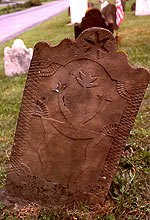
As we end 2009 and start thinking about a new year, I wanted to introduce you to an artist that paints in an abstract style. His name is Wassily Kandinsky and he was a Russian painter born on December 4, 1866 in Moscow. His paintings just make me feel good when I look at them. I love the colors most. Take a look at some of my favorites and see if you would like to paint some similar compositions.



Kandinsky wanted viewers (of his paintings) to get the same emotional power from his compositions that one gets from listening to musical compositions. He felt music allowed the listener freedom of imagination and interpretation. He wanted to express his emotional perceptions with color and form in his paintings the way music expresses itself through sound and time. This led to the development of his abstract style of painting.

Kandinsky loved music, especially classical music and Wagner's “Lohengrin” (German opera) stirred him so much that he decided to devote his life to art, convinced of the emotional powers of music. He was one of the first modern artists who painted abstract shapes to express his feelings. He would listen to music and try to paint what the music made him feel. He wanted to paint the musical notes as if they were colors instead of sounds.

You can create a painting using this same method Kandinsky used. Gather your paints, brushes, water, containers, paper, paint shirt, and desk cover. Listen to some music (either classical or some you like) and close your eyes. Think about the way the music makes you feel. With your eyes still closed, imagine the sounds of the music as colors and shapes. What colors are you seeing? Are the colors bright or dark? Do the shapes have straight lines or are they soft and wavy? Open your eyes and try to paint what you saw in your mind.
































.jpg)













